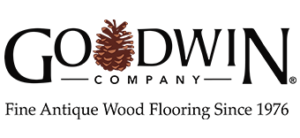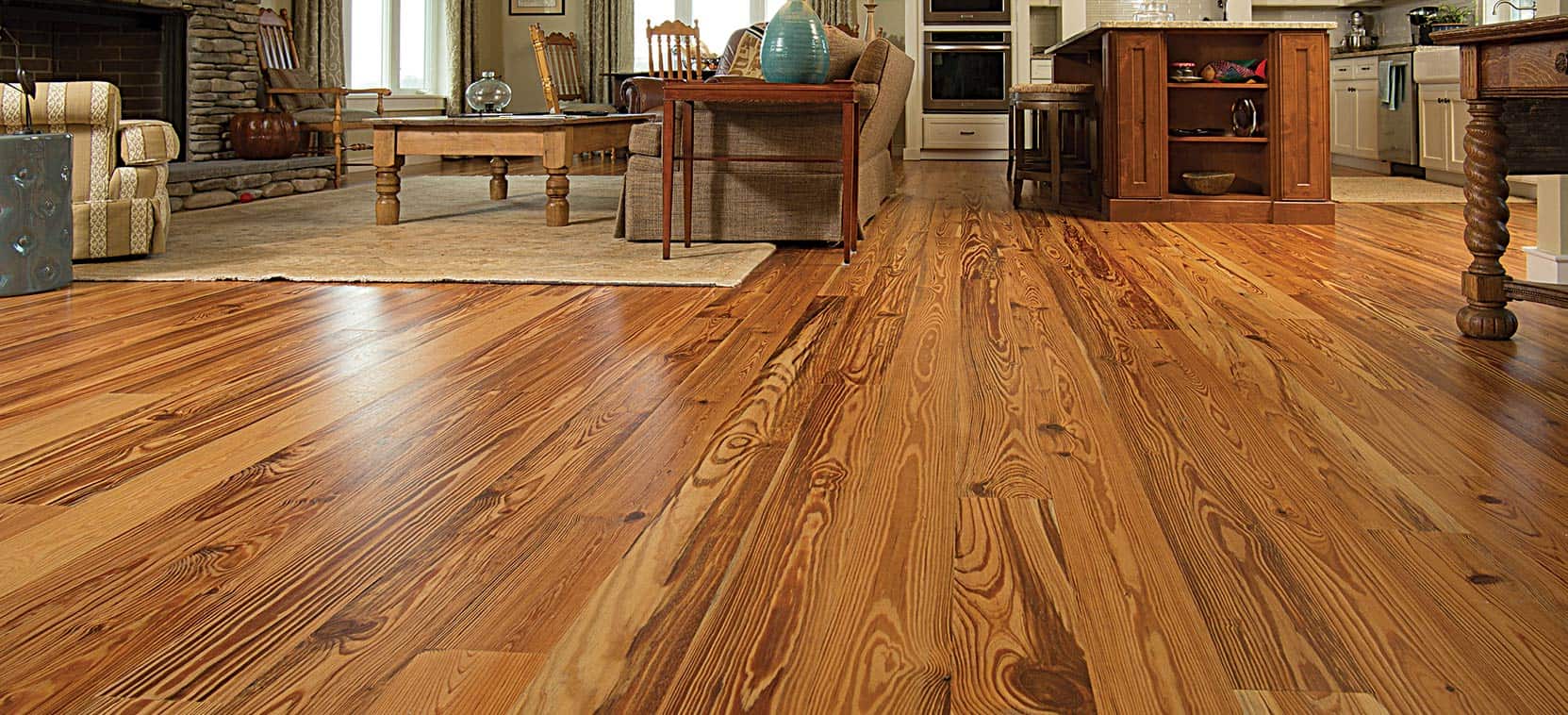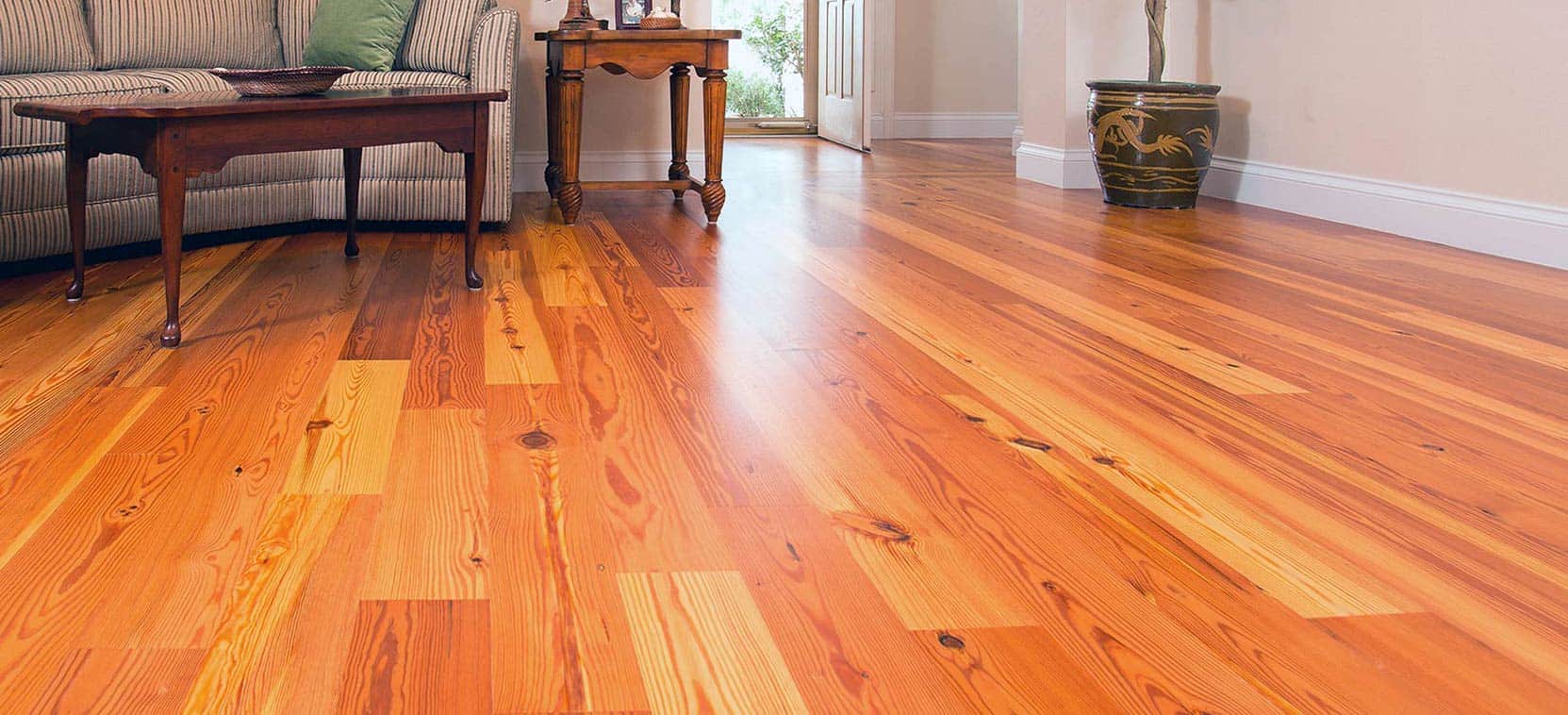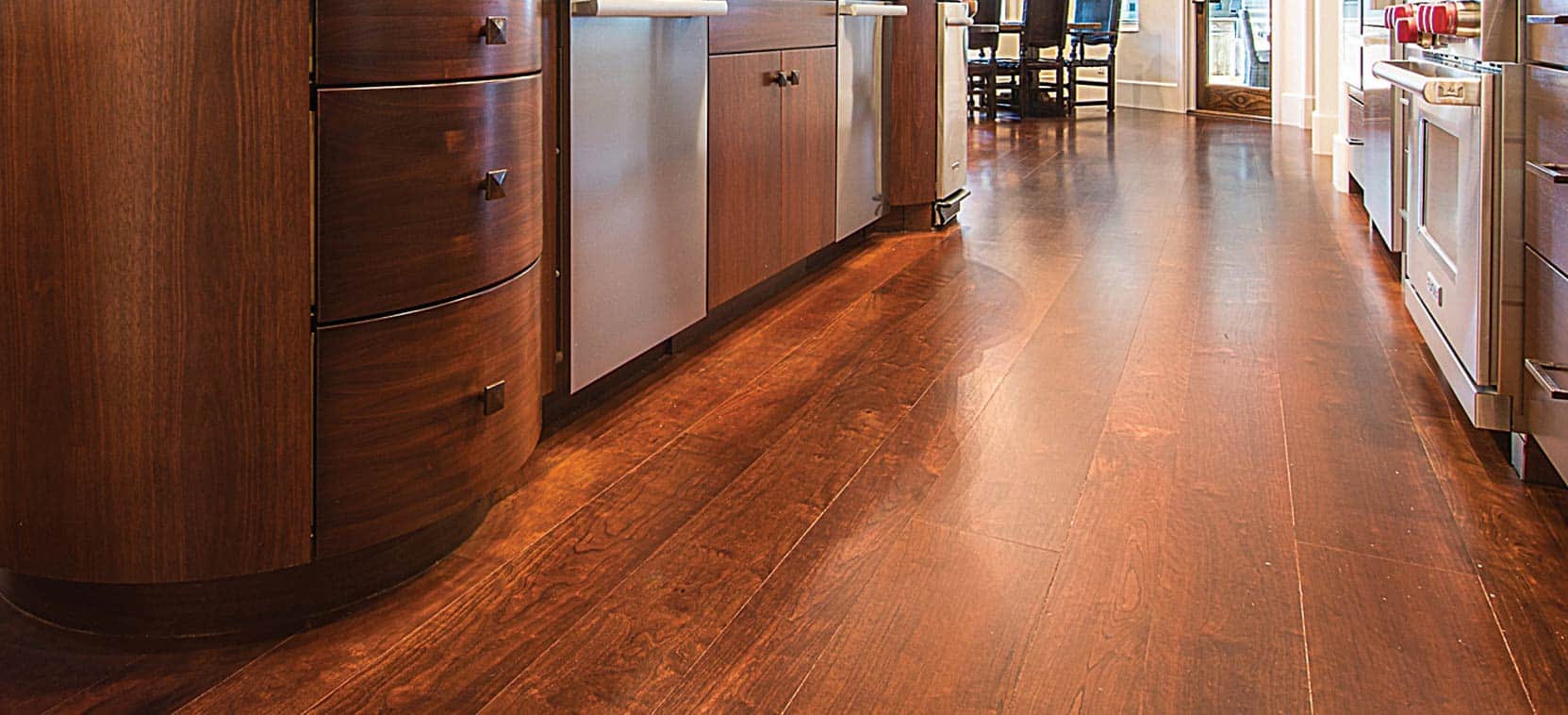What is Precision Engineered Wood Flooring
Looks and Lasts like a Solid
Goodwin Company’s precision engineered (PE) wood flooring is made from the same recovered and sustainable woods as our signature solid wood lines, and are finished with high-quality, environmentally-friendly products that maintain a beautiful finish for years to come.
Dedicated to Sustainable Wood
In addition to River Recovered® antique heart pine, Goodwin offers its precision engineered wood flooring in building reclaimed antique heart pine, rescued wild black cherry, antique heart cypress, sustainably harvested walnut, and rescued mahogany (Andiroba), among other reclaimed or rescued woods.
American-Made
Goodwin Company, specialists in recovering original growth logs from Southern rivers, is proud to be the first reclaimed wood company to manufacture engineered wood flooring at our mill, located in Micanopy, Florida. All of our materials are kiln-dried, quality-milled, have well-defined standard grades, and are supported by our established technical expertise.
People Friendly and Environment Friendly
People Friendly and Environment Friendly
American-made in Florida
Goodwin Company, specialists in recovering original growth logs from Southern rivers, was the first reclaimed wood company to offer an American-made precision engineered wood floor. This helps Goodwin conserve the rare wood while allowing homeowners and building design professionals to install premium flooring in environments where solid wood flooring is impractical or not advisable.
Tight-grained, nearly-indestructible, stable, and rich, Goodwin Antique Heart Pine PE floors provide all the beauty and luxurious warmth for which our premium solid wood products are known, respected and cherished while helping conserve the rare all heart wood.
George Goodwin was planning for engineered wood floor production many years ago when he designed his sawmill so that the last cut off each rare River Recovered® log was a thicker board. These were set aside to go into a specialty frame saw that George had custom built to cut the dense, resinous wood into faces or wear layers for engineered flooring.
The Beauty of Engineered Wood Floors
The Beauty of Engineered Wood Floors
by Andrew St. James, PhD.
Wood Source Magazine, Winter 2009
Traditional wood floors are increasingly giving way to engineered products due to improved product performance and reduced cost. With some research you can have an engineered wood floor that truly looks and lasts like solid wood. We have successfully created an engineered product that looks and lasts just like solid wood and can be installed where solid wood is impractical.
Why choose engineered over solid wood flooring?
There are many ways that our Precision Engineered wood will give you a product that may better suit your needs. Let’s review the limitations of solid wood products and the benefits of our engineered counterparts.
Shrink or Swell: The Properties of Wood
Most wood cells have a long tubular shape, are typically vertical in the main stem of a tree, and have a radius significantly smaller than the length. Many of wood’s structural properties derive from cellulose molecules in the cell wall that attract and chemically bind water. This ‘bound’ water in the cell wall equilibrates with the relative humidity of the atmosphere around the wood causing the wood to shrink or swell over some time, usually a seasonal change.
If you compare the rate of expansion or contraction across the face of a board to the length change it is typically 50 to 100 times greater across the face. Wood experiences much less movement along the direction of the cellulose molecules. Wood floor installers allow for movement across a floor by leaving expansion gaps next to walls. Traditionally, the use of solid wood flooring directly over concrete has been avoided because of moisture issues.
Shrinking and swelling in engineered wood products is greatly reduced by gluing layers together with the alternate layers turned ninety degrees. The cross ply construction has shrink/swell characteristics that are dominated by the low expansion coefficient in the direction of the cellulose molecules, resulting in a reduction of the shrink/swell across the face by a factor ranging from 10 to 20 times — far less than solid wood.
The Facts About Engineered Wood Floors
Engineered wood flooring offers the advantage of using a smaller amount of high quality or rare wood for the face. Some of the lesser quality engineered flooring contains smaller pieces that are not suitable for use in solid flooring, resulting in a chopped up look. However, a high quality engineered flooring can be produced from full size boards and maintain the same aesthetically pleasing look as a traditional floor.
As ‘green’ building has become more prominent, more products are available with environmentally certified ‘green’ faces and backers. Look for a product that has certified low formaldehyde emissions from the glues and backer.
A wear layer comparable to a solid wood floor can be achieved using a precision ‘frame’ saw instead of slicing or peeling the faces. A thicker wear layer requires even more attention to the details of the profile. One example is the location of the tongue and groove; setting them too high on a product with a thick wear layer increases the risk that the flooring will not remain flat.
What Matters Most: Selecting the Best Finish for Precision Engineered Flooring
Wood floor finishes are complex chemicals that require proper maintenance for the best result. It’s essential that your wood floor professional is an expert in working with the finish you select.
Choose Wisely… Choose Goodwin
Wood floors are durable and easy to live with. The direct benefit of adding value to the home is a recognized bonus. Modern finishes require little maintenance and can be cleaned without the use of harsh chemicals, furthering wood’s value as being environmentally sound or ‘green’ friendly. The long service life reduces the amount of solid waste. And an important benefit for the homeowner – wood is hypoallergenic, thus avoids problems associated with some other floor coverings. Goodwin provides the best choice in wood flooring.
Features of Goodwin Precision Engineered Floors
Features of Goodwin PE Floors
Our PE floors are made from the same recovered and recycled wood as our signature solid wood lines. The also boast:
- A finish that is both beautiful on reclaimed wood and wears well – available unfinished
- Designed to stay flat with changes in humidity – more layers above tongue & groove
- Earth friendly reclaimed face, certified ‘green’ back & low formaldehyde glues
- More antique/reclaimed wood beyond the backer for consistently tight fit
- Lifetime structural warranty on the floor and 20 years on the finish
- Made in the USA, entirely assembled at our plant in Florida
- Long lengths to look like a solid wood floor… mostly 8′
- Wear layer can be sanded the same # of times as solid
Precision-Engineered vs. Solid Wood
Precision-Engineered vs. Solid Wood
Goodwin began engineered flooring to help conserve the rare River Recovered® wood. We believe that solid wood floor will always be the ‘gold standard’ for those who can accommodate its greater demands.
| Precision-Engineered | Solid Wood |
|---|---|
| Less damage from water leaks. | Cups and buckles more easily. |
| Made with ‘water resistant’ plywood & glues | Much more difficult to glue down to concrete. |
| Looks like solid wood when finished onsite with long boards | Both solid and engineered have a micro-beveled edge if pre-finished |
| Can be sanded the same number of times as you would sand a solid wood floor. | Once you sand 3/16ths into a solid floor it begins to lose its integrity. |
| The ⅝” height of the engineered floor matches well to adjacent stone or carpet. | Usually requires a ¾” sub floor plus a ¾” thick wood floor. |
| Comes rough sanded and is easier to sand than solid. Unless pre-finished it still needs sanding, despite some marketing claims. | Often adds time to the end of the construction cycle. |
| Performs well in any environment that stays within a percent or two of the moisture content at which it was manufactured. | Will perform in most any environment if properly acclimated to the relative humidity that will exist after it is installed. |
Which Onsite Finish Should You Use on Reclaimed Wood?
Which Onsite Finish Should You Use on Reclaimed Wood?
True Oil Finish vs. Polyurethane – Explained by the Experts
Experience Leads to Different Conclusions Depending on Your Finish Goals
Universal Hardwood Floors in DC, says, “We put on four coats of ‘tungoil’ and buff it in.” By ‘tungoil’ they mean Waterlox, “a varnish with tung oil in it,” says Howard Brickman, Brickman Consulting. Another old-timer, Bill Price, www.floormasters.com, says, “I like oil finish. Polyurethane looks the best it will ever look the day it’s applied! Oil looks better every year if you are willing to touch it up and buff it as needed.”
What About Maintaining Your Floor’s Finish?
We asked about ‘penetrating hardening oils’ such as Rubio MONOCOAT, WOCA or Carver Oil. Sprigg Lynn from Universal says, “Each has their selling points. Waterlox is a satin sheen that can be made to shine some more with thin coats and extra buffing. If the traffic isn’t real heavy it’s fairly easy to touch up. MONOCOAT, WOCA and Carver are easier for the homeowner to repair scratches. All are filling the grain and putting some finish in the wood, not on top. These are ‘low-’, not ‘no-maintenance’, finishes.”
Bill Price adds, “Waterlox has drying agents that make it harder to buff. If you put it on too heavy it stays soft and retains a smell for a while. MONOCOAT interacts only with the cellulose in the wood cells and is easiest to apply and repair. The natural look of MONOCOAT, WOCA or Carver is a matte finish; however you can increase the sheen by using one of their maintenance products such as “High Traffic Protection.”
The Finish of the Future
Lynn summed it up by saying, “MONOCOAT, WOCA or Carver are the ‘finishes of the future’ with no VOCs. They give a very natural, flat and beautiful looking floor. They wear the best of the oil finishes we’ve used, however require some regular maintenance. Residential jobs may work out better with Waterlox if the owners don’t want to do any maintenance. However, the other oils are much easier to repair. With any penetrating oil be careful of spontaneous combustion.”
What If You Want Polyurethane?
What about the folks who want polyurethane to avoid doing anything besides cleaning until it’s time to call the professionals to ‘screen’ and recoat? Water-based polyurethanes give a clear finish, have low odor and you can recoat them in a couple of hours. Oil-based polyurethanes leave an amber glow, but have a much longer wait time between coats. We’ve had success in achieving a fairly natural look with some newer water-based polyurethane sealer/ finish systems. Call Goodwin or ask your wood floor expert for details.
What Matters Most…
Wood floor finishes are complex chemicals that require someone who applies them regularly to get a good result. Each brand has different application rates, drying times and conditions and different maintenance. This information may help explain the basics and provide some references. What matters most, in general, is your wood floor professional’s experience with the finish you choose.









